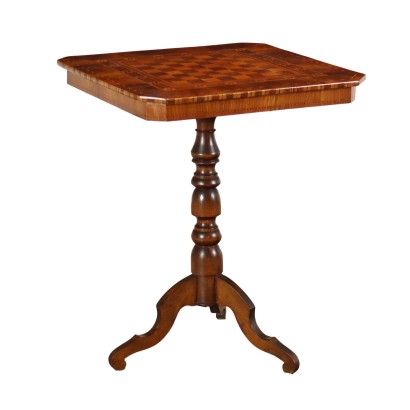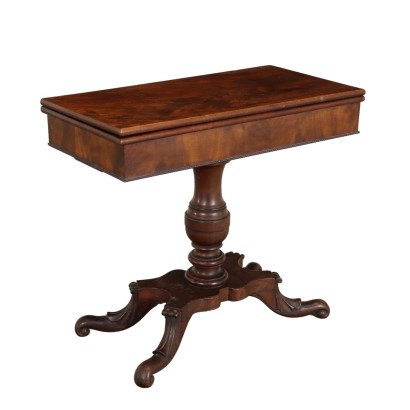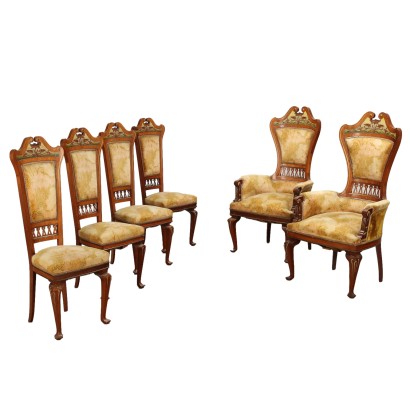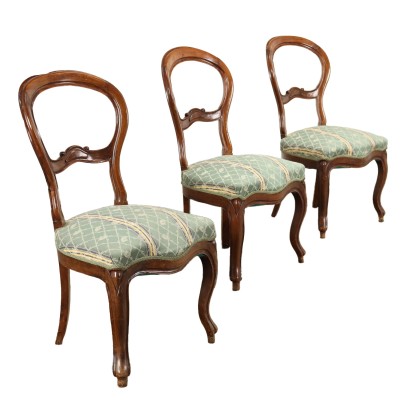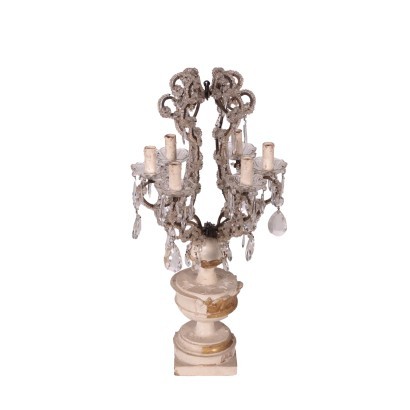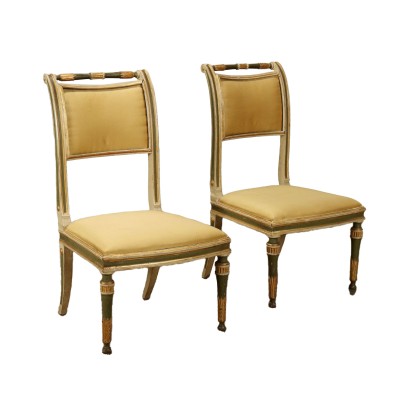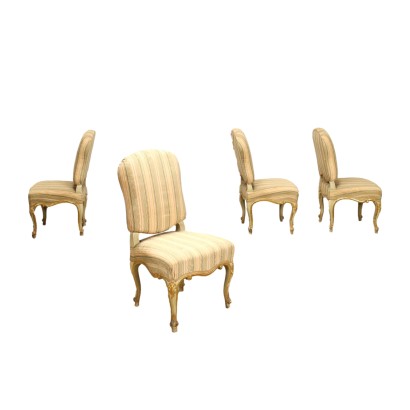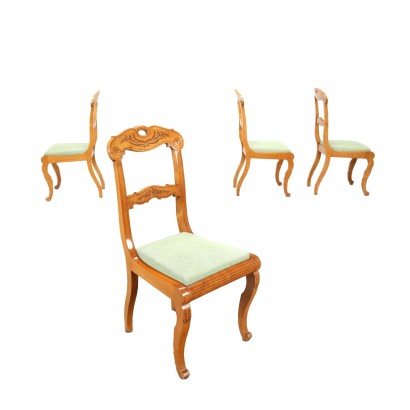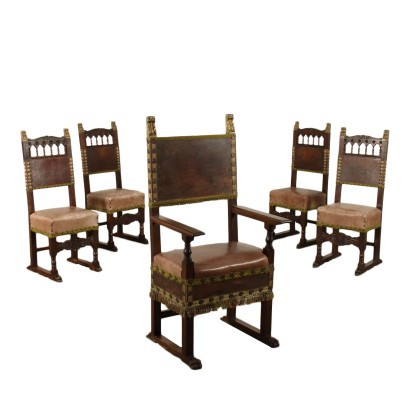Rolo Coffee Table Walnut Italy XIX Century - Rolo, Second Half XIX Century
Features
Rolo, Second Half XIX Century
Age: 19th Century / 1801 - 1900
Origin: Rolo, Emilia Romagna, Italy
Main essence: Maple , Cherry , Walnut
Material: Inlaid Wood , Other Wood
Description
Rolo coffee table, Vincenzo Mari workshop in walnut, Italy, second half of the 19th century. Top inlaid with chessboard and geometric motifs in walnut and cherry, the latter also present on the border and in the band under the top; decoration completed by maple purfling. 20th century base replaced.
Product Condition:
Product that due to age and wear requires restoration and re-polishing. We try to present the real state of the furniture as fully as possible with photos. If some details are not clear from the photos, what is reported in the description will prevail.
Dimensions (cm):
Height: 75,5
Width: 60
Depth: 60
Additional Information
Notes historical bibliographic
Vincenzo Mari (1802-1888): cabinet maker active in Rolo in the 19th century. The workshop of the cabinetmaker Vincenzo Mari was one of the most prolific in Rolo in the second half of the 19th century and the documentary sources attribute an innovative role to it with the introduction of mosaic decoration on the table tops. Vincenzo Mari availed himself of the collaboration of his four sons: Alfonso, Pietro, Ugone and Ilarione.Age: 19th Century / 1801 - 1900
19th Century / 1801 - 1900Main essence:
Maple
Hard, light wood used for inlays. It grows mainly in Austria, but it is widespread throughout the northern hemisphere, from Japan to North America, passing through China and Europe. It is one of the lightest woods ever, tending to white, it is similar to lime or birch wood. The briar is used in the production of ancient secretaires .Cherry
Obtained from prunus cerasus , a plant of oriental origin, it is a hard wood with a light and delicate color, with a reddish vein. Due to its diffusion and availability it was used in Europe in popular furniture. In cabinet making, in the seventeenth century, it was widely used in France and England for inlay work. In Italy it was very successful in Lucca. It was also very popular in the United States for the manufacture, from the late 1600s, of commonly used furniture.The dictionary of antiques: Eclecticism
Classic Monday: a sofa from the 1800s example of eclecticism



